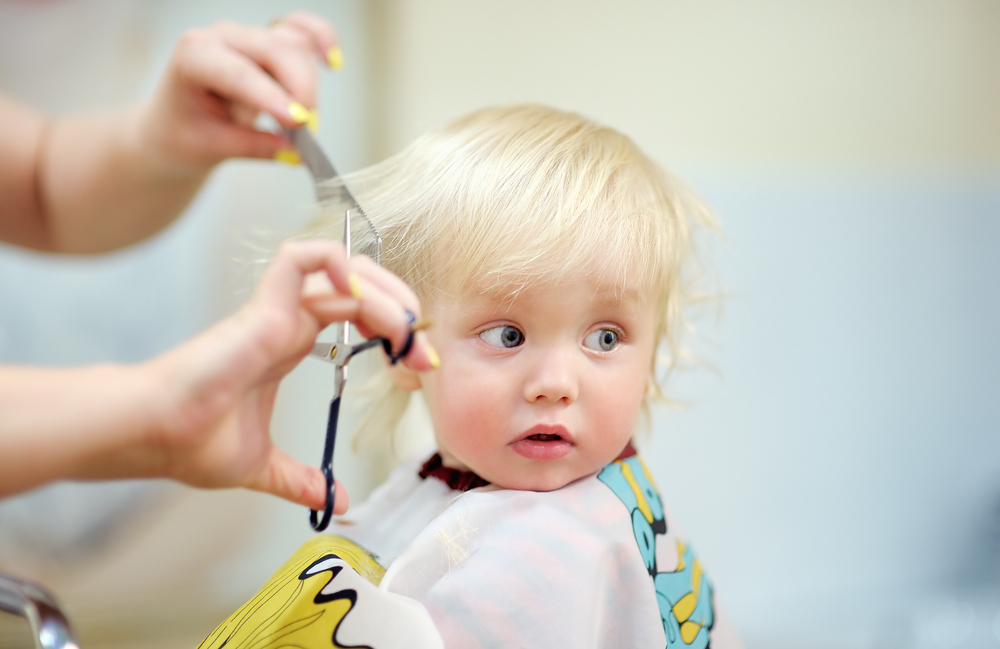Haircuts for Autism

Hi there,
To give some back story, I’ve been in the hair industry coming up on 5 years now. It’s taken me this long to feel comfortable walking in the salon everyday, knowing I can do just about any haircut on just about any head. However, I’ll never forget those first timers, like the first time I had to cut a super angled bob or the first time I gave someone who was wheelchair bound a hair wash at the shampoo bowl. These experiences can be quite nerve-wracking to say the least, but later can be seen as building blocks for a stylist’s overall skill. One first that could never quite shake, was the first time I did a haircut on my little cousin’s hair. His name is Alexis, he’s 8 years old and nonverbal, diagnosed with autism. It’s crazy to image myself, right before the haircut, scrambling through google trying to figure out how to provide a service on someone who is nonverbal. But that’s exactly what I did and I remember stopping and trying to remember if this was brought up at all during cosmetology school. I couldn’t think of going over a single chapter, or a paragraph, not even a sentence.
Narrowing Down
In order to understand the severity of the issue, I had to understand the problem. Which presented itself as, While haircuts can be deemed as an overwhelming or stressful task for people with autism, stylists aren’t properly trained in the area to help offer a better experience for the customer. Next, I had to determine what I was trying to solve, what question was I ultimately going to ask to address the problem? This became, How could a training system for licensed cosmetologists improve the haircutting experience for both the stylist and those with autism? Once this was established, I narrowed my target audience down to any licensed cosmetologist, while also welcoming those in training. Next step was to develop my research plan.
Research Plan
- I started with researching some scholarly articles, trying to find those relating haircuts to Autism.
- Next, I was able to gather personal observations from a salon where I work.
- The articles and observations helped me develop research questions for both a focus group consisting of 6 stylists, and questions for one on one parents interviews with those who have kids with autism.
- It’s important to note that during this part of the research phase, connections were being made as I learn more about what stylists and caretakers wanted from the consultation and overall service itself.
- Once both the focus group and interviews were complete, I used the data to create a survey in which I sent out to numerous online haircutting forums to get more insights from a wider range of stylists.
- Eventually, the data gathered from all my research was used to design and test my solution.
Insights
After analyzing the data I collected, I found that nearly 80% of stylists, ranging from all levels of experience, wanted access to some form of online training to help provide haircutting services on those with Autism. I also took note that a majority of other stylists don’t recall receiving any proper training on providing services on those with ASD or any physical or mental disorder for the matter.
I wanted to figure out what exactly stylists wanted to know, based on the survey, I received questions about a wide range of topics surrounding autism. Anything from knowing more about the disability itself to wanting to know how to communicate with someone who is Autistic and may not be able to communicate properly.
“How to introduce items that may cause sensory challenges.”
– Anonymous stylist from survey. -2021
Design Solutions
Based on my findings, I wanted to develop some sort of information hub for stylists.
Awarecuts serves as a online workshop stylists could complete to not only learn more about autism but also shed light on what one might experience during a haircutting service. The workshop consist of a series of modules that touch base on everything from autism levels and symptoms to explaining how meltdowns or shutdowns may occur. Each module is designed to give stylists better understanding and ways to possibly make the service run a bit more smoothly. Modules also give insight on how a stylist could deal with certain situations that may arise and even ways to communicate effectively with those who are nonverbal. All in which is meant to hopefully lessen the anxiety for those with ASD and hopefully increase the confidence stylists have doing future services on those with ASD.
The website also includes a demo page providing secondary haircutting techniques that tend to cause less stimulation. This page also showcases tools available for stylis that are more sensory friendly. The website also offers a community page that could be used for safe and open conversations about the matter.
Stylists also have the option of purchasing an Awarecuts pin badge. This could be placed on the aprons or smocks of those who have completed the training workshop. Not only does this initiate conversations that could be used to spread awareness but it also allows people to recognize the stylist has been thought a proper training course.
Testing Phase
Once I was able initiate the testing phase, I had all members of the focus group come back individually to go through the workshop. 6/6 all agreed on walking away, having a better understanding of the disability as well as taking away a certain components to be used during future services. Overall, the solution was a success in fulfilling the needs of stylists by containing necessary information to providing haircuts on those with ASD.
“Special thanks to my cousin Alexis for being the inspiration behind my final project with DMOH. Thank you!”
– Hannah Cortez, 2021
